Women in Immunology / AAI Biosketch
Hidden Figures of AAI: Five Women Pioneers in Immunology
by John Emrich and Charles Richter
April 2020
At the 1908 annual meeting of the Women’s Medical Society of the State of New York, Martha Wollstein (AAI 1918), the pathologist at Babies Hospital, gave a speech entitled “The History of Women in Medicine,” highlighting women’s progress and setbacks in the field since the time of the ancient Greeks. Wollstein’s conclusion was a call to action advocating for more opportunities for women in all aspects of medicine. She declared that the current generation was the first to have “entered societies and laboratories for the benefit of all.”
Wollstein spoke in an era when women in science and medicine were viewed by many in the scientific community as inferior to their male counterparts. They were not generally provided the same rights and privileges as men in the laboratory or clinic. Medical societies typically banned women or elected only a token few, sometimes to a lower member status than men. By contrast, from the time of its founding five years after Wollstein’s speech, The American Association of Immunologists had no gender restrictions, and women and men alike were elected as full members.
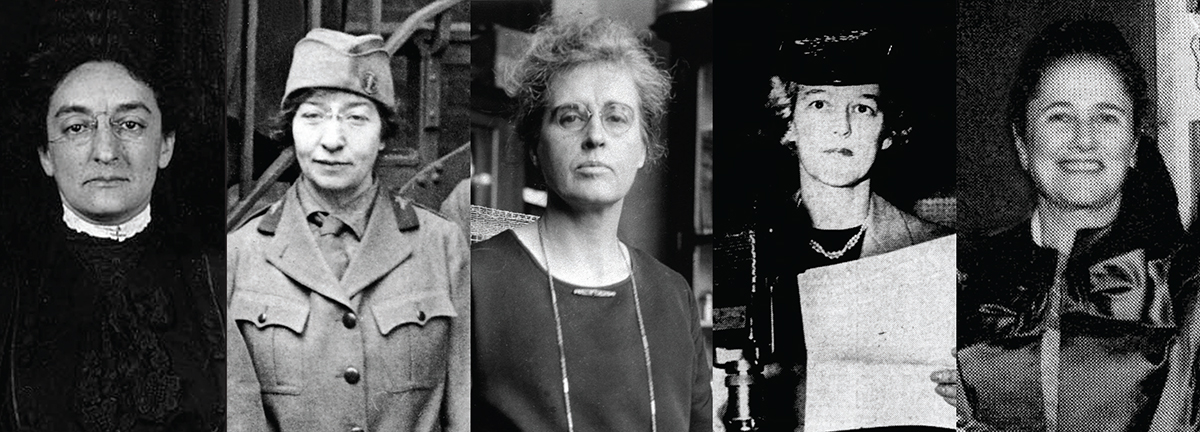
To mark Women’s History Month in March 2020, we profile five women immunologists who in the early decades of the 20th century persevered in the fields of bacteriology, serology, public health, pediatric pathology, and drug development. They moved the science of immunology forward while simultaneously opening the field to future female immunologists. These pioneers are Martha Wollstein (AAI 1918), Olga R. Povitzky (AAI 1920), Winifred M. Ashby (AAI 1923), Eleanor A. Bliss (AAI 1931), and Jessie Marmorston (AAI 1932).
These women were at very different career stages when they joined AAI; most were immigrants or first-generation Americans, and all were accomplished immunologists. Given gaps in the historical record, they also represent other trailblazing women scientists of their era whose lives and accomplishments have been lost to history.
Martha Wollstein, M.D. (1868–1939)
Martha Wollstein (AAI 1918) was an accomplished physician, researcher, and the “first North American pediatric pathologist” when she became one of the first women elected to active AAI membership in 1918. She was born in New York City on November 21, 1868, to German Jewish immigrant parents who encouraged her education. Wollstein received her M.D. in 1889 from the Woman’s Medical College of the New York Infirmary, interned at Babies Hospital, and in 1891 was appointed its pathologist—a unique position for a woman of that time because it allowed her to practice the full scope of pathology, including patient care, bench research, and autopsies.
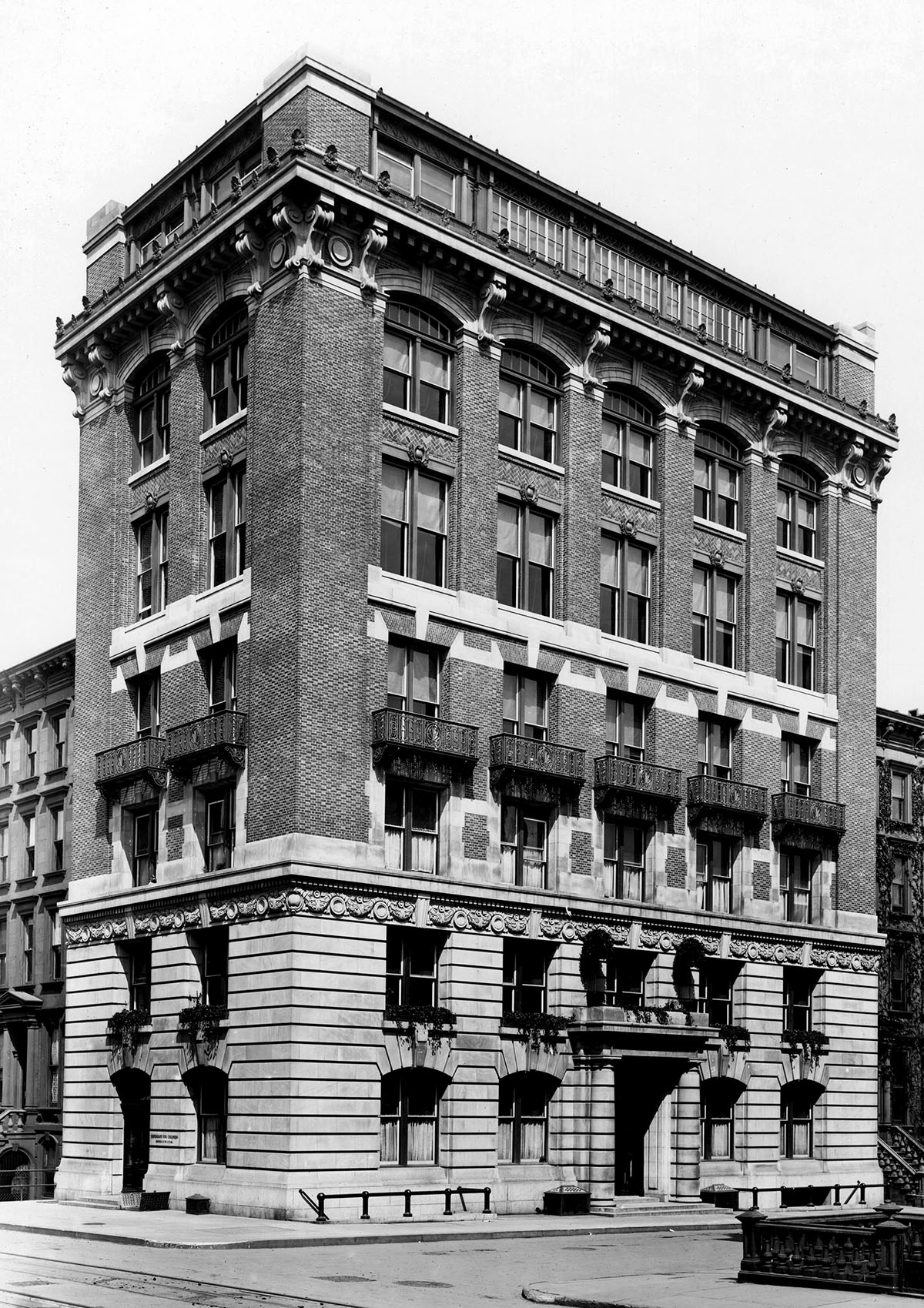 Babies Hospital, c. 1876–1914
Babies Hospital, c. 1876–1914
New York Historical SocietyHer clinical and basic research at Babies Hospital included malaria, tuberculosis (TB), and typhoid fever. But it was her investigation of the bacterial causes of infant diarrhea that first caught the attention of the scientific community, including Simon Flexner (AAI 1920), the recently appointed first director of the Rockefeller Institute for Medical Research (RIMR). In 1903, Wollstein isolated Shiga bacillus, which only three years prior had been shown to cause dysentery, in some of her patients. Flexner, whose research focused on dysentery in the Philippines, was so impressed by her research that he offered her a position as an assistant researcher at RIMR in 1906.
In her concurrent position at RIMR, most of Wollstein’s research was non-pediatric in nature, with the exception of polio research with Flexner. She maintained her duties and pediatric research at Babies Hospital, including publishing an important, three-part series on the incidence and clinical effects of TB in babies. This was the first study to provide data specific to childhood TB.
At RIMR, her significant collaborations included developing methods and protocols to create anti-meningitis serum with Harold Amoss (AAI 1917) and streptococcal and bronchopneumonia studies with Samuel J. Meltzer. The latter collaboration would influence measles researchers generally, and the streptococcal research would become the life’s work of one of her successors at RIMR: Rebecca Lancefield (AAI ’31, president 1961–62).
With the outbreak of the influenza pandemic of 1918, Wollstein became intimately involved with the influenza research at RIMR because of her earlier research on the development of a Pfeiffer’s bacillus serum. At the time, Pfeiffer’s bacillus (today known as Haemophilus influenza) was considered widely to be the causative agent for influenza, although new studies were beginning to question the accuracy of this belief. Wollstein’s work provided additional evidence that the prevailing hypothesis was incorrect and that the bacillus was a secondary infection.
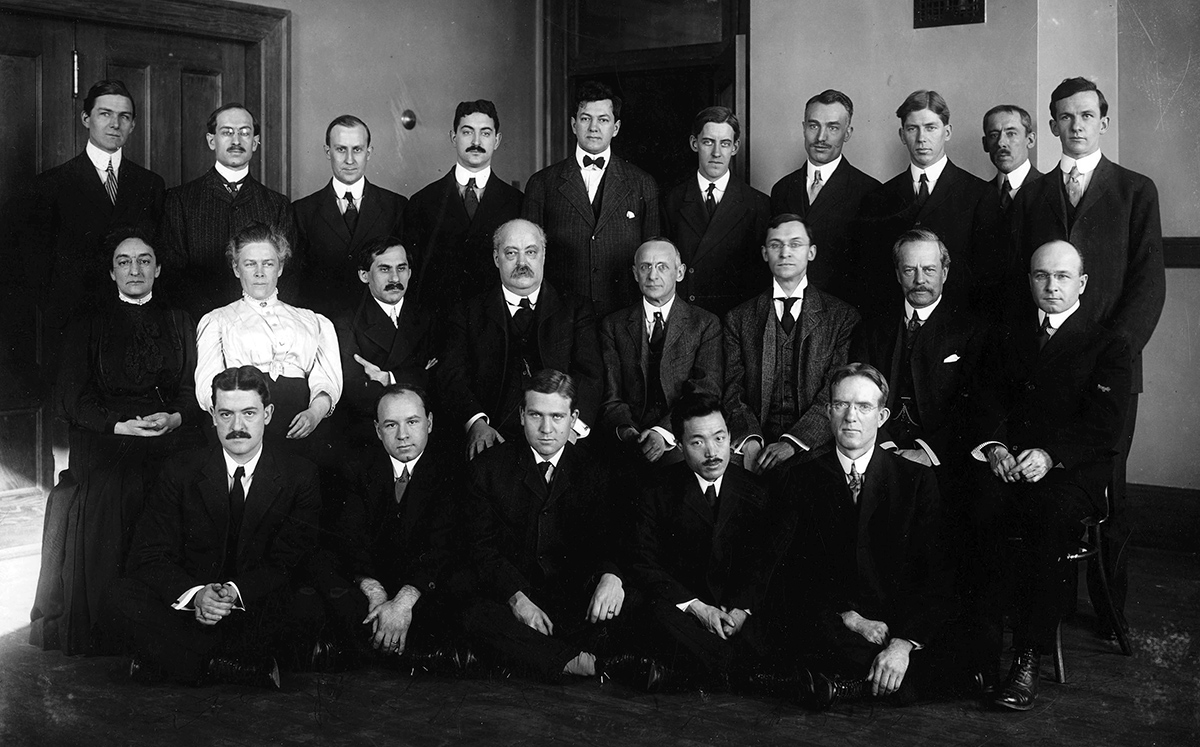 RIMR Lab Staff (Wollstein middle row, first from left)
RIMR Lab Staff (Wollstein middle row, first from left)
Rockefeller Archive CenterWollstein’s core research remained focused on childhood diseases, and in the late summer of 1918, she published her most influential discovery on the etiology of mumps. The popular medical consensus held that a type of coccus was the causative agent of mumps because it was isolated from the blood, saliva, and fluid aspirated from the swollen parotid gland. Wollstein’s research definitively concluded that mumps was not bacterial but viral in nature.
In 1921, after RIMR did not extend an offer to her to join the staff on a permanent basis, she returned full time as the pediatric pathologist at Babies Hospital and devoted her research to pediatric diseases, including leukemia, TB, influenza, and meningitis.
During her career, Wollstein published more than 60 scientific papers and won numerous honors, including an appointment as head of the pediatric section of the New York Academy of Science (1928) and election to the American Pediatric Society (1930) as its first female member.
Olga Povitzky, M.D. (1877–1948)
Olga Raissa Povitzky (AAI 1920) had a 41-year research career with the New York City Department of Health—remarkable for a woman who came to Philadelphia from Lithuania as a 16-year-old girl on her own, speaking only Russian.
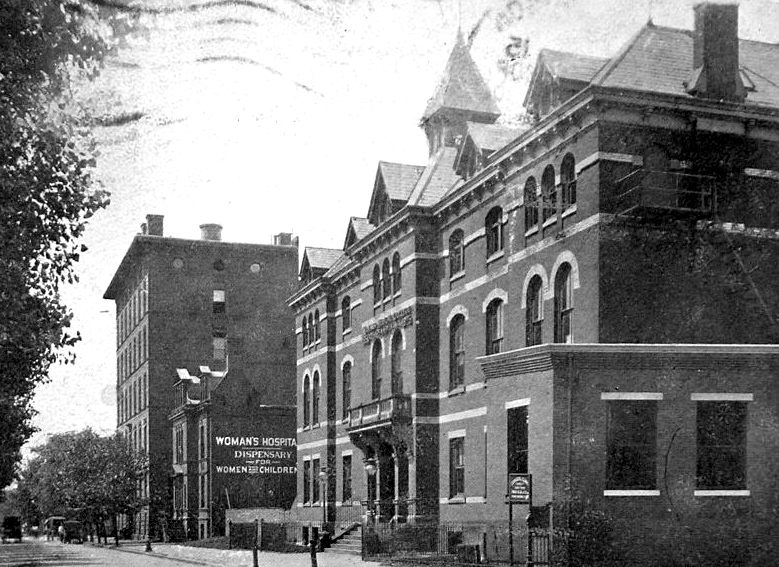 Postcard of Women’s Medical College of Pennsylvania, 1906
Postcard of Women’s Medical College of Pennsylvania, 1906
Povitzky joined her older brother Charles, a druggist who had immigrated two years earlier. She learned both English and medicine at the Women’s Medical College of Pennsylvania (now part of Drexel University College of Medicine).
She managed to overcome the language barrier, but later recalled an incident in which she was asked what she thought of a lecture on Darwin and replied—without meaning to make a pun—“I did not understand it very well but there seemed to be a lot of monkey business in it.”
Povitzky completed her M.D. in 1901 and briefly maintained a private practice in Mahanoy City, Pennsylvania, before moving to New York City, where she spent the rest of her life. She became a U.S. citizen in 1904. She earned a doctorate in public health from New York University (NYU) in 1905 and that same year began her research in the Health Department laboratories, initially working on equine glanders, a contagious bacterial infection that created nodular legions primarily in the lungs and skin. She was also an active lecturer on public health at NYU.
Povitzky was politically active, donating to the socialist magazine The New Review and advocating for women’s suffrage. During the First World War, she joined the first contingent of the Women’s Oversea Hospitals, sponsored by the National American Woman Suffrage Association. In February 1918, she set sail for the war zone in France with a group of 30 other women that included nurses, a plumber, a carpenter, a chemist, drivers, and five other physicians.
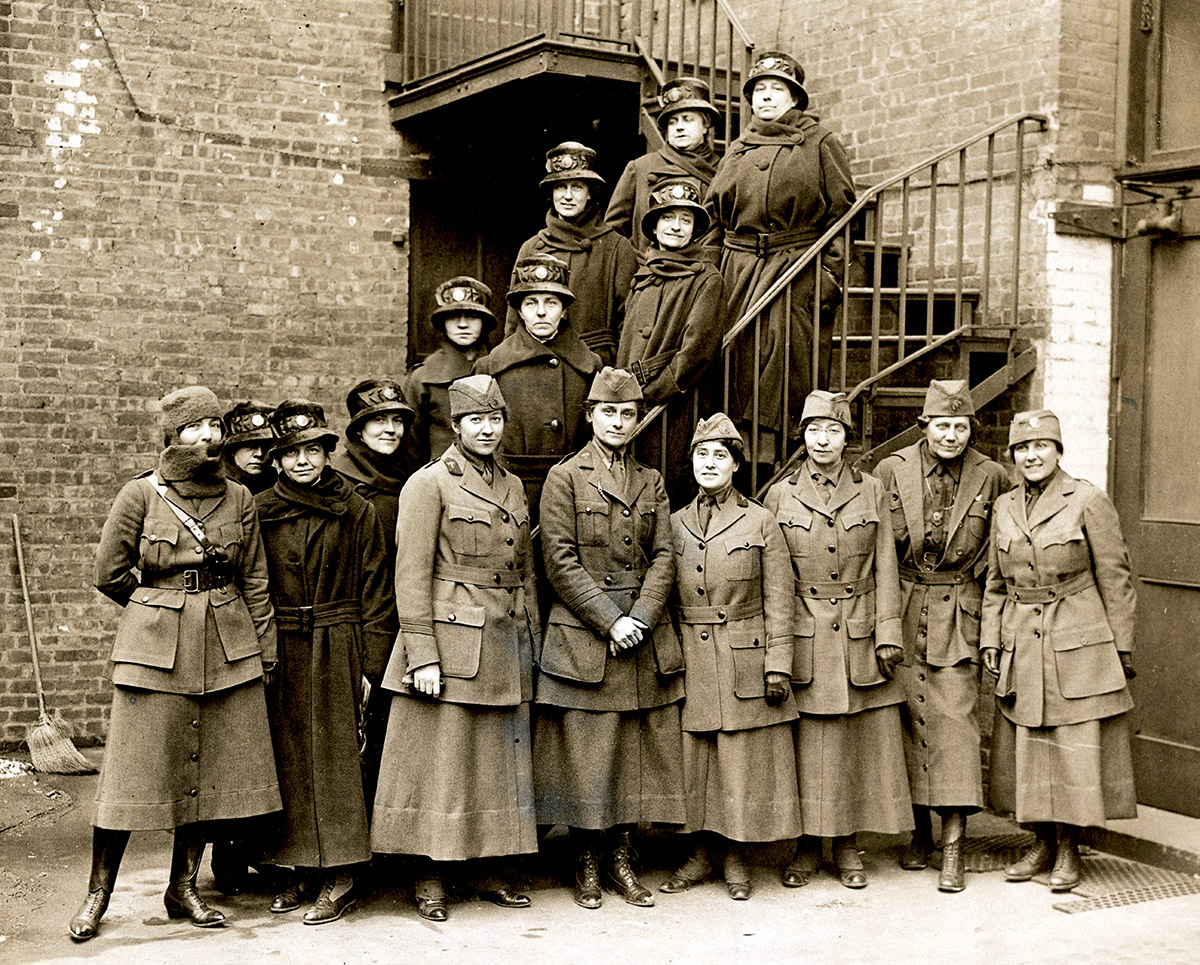 First Contingent of Women’s Oversea Hospitals, c. 1918 (Povitzky front row, third from right)
First Contingent of Women’s Oversea Hospitals, c. 1918 (Povitzky front row, third from right)
National ArchivesThe male French military surgeons initially viewed the women with suspicion, but only briefly. A day after their arrival at the field hospital, it was suddenly flooded with 650 wounded from a German advance. The women “did not stand on their dignity but did whatever needed to be done,” including cutting off bloody bandages, giving injections, and preparing wounded soldiers for surgery. Povitzky was then sent to the Pasteur Institute in Paris to receive specialized training in gas gangrene. She spent the rest of the war at the Laboratoire d’Epidemiologie at Le Mans “doing all the bacteriological, physiological, and chemical examination for the military hospitals of Sarthe, Mayenne, Eure et Loire and Orne.”
After the war, Povitzky returned to the New York City Department of Health, where for several years she oversaw the manufacture of diphtheria antitoxin in the laboratory of William H. Park (AAI 1916, president 1918–19). She also studied H. influenzae, experimenting with a serum that could cure meningitis caused by this bacterium. Throughout the 1920s and 1930s, she published in The Journal of Immunology and other journals, primarily on developments that refined production techniques for diphtheria toxoid and antitoxin, and also on pertussis.
In the 1930s, Povitzky designed a rectangular two-liter Pyrex culture bottle for diphtheria antitoxin production that was later adopted in a larger five-liter size as the standard vessel for the Salk polio vaccine. The durable “Povitsky bottle” proved ideal for culturing poliovirus in a custom-made rocking rack.
She remained active in the laboratory until just two years before her death in 1948.
Winifred Ashby, Ph.D. (1879–1975)
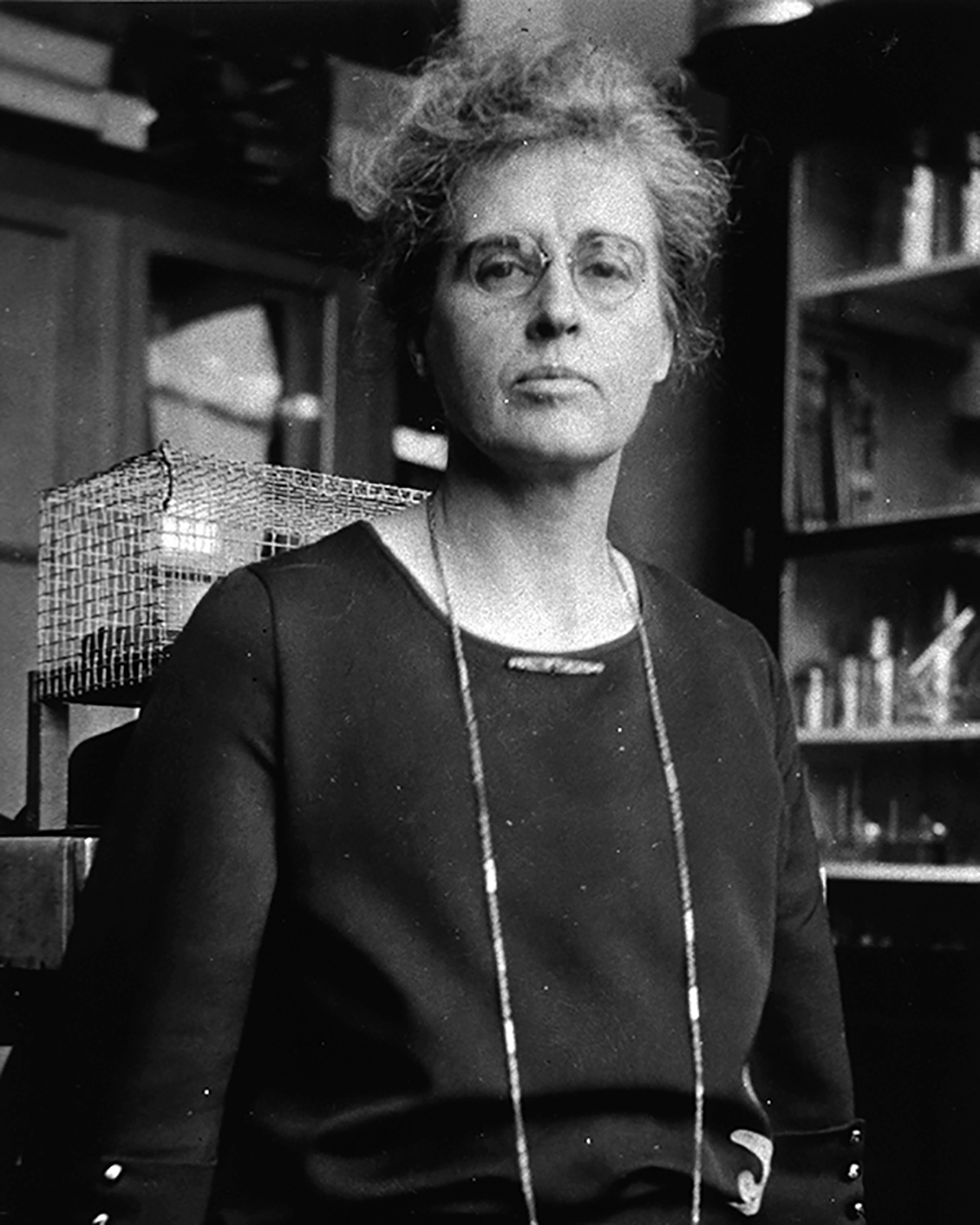 Winifred Ashby
Winifred Ashby
National Library of MedicineWinifred M. Ashby (AAI 1923) made her imprint on immunology while conducting research for her Ph.D. dissertation. This work led her to develop the first technique to determine red blood cell lifespan in humans. The Ashby technique (or Ashby method) was a major step in increasing the efficacy of blood transfusions and the management of chronic anemia. The technique saved countless lives during World War II because it was the primary method to assess the storage and shipping of blood for transfusion required for the war effort. By the late 1960s, the Ashby technique of differential agglutination was replaced by radioisotope-tagging of red blood cells, which was safer, easier, and provided a higher degree of precision and accuracy.
Ashby and her family emigrated from England to Chicago when she was 14. She earned her B.S. from the University of Chicago (1903) and an M.S. from Washington University in St. Louis (1905). While at Washington University, Ashby became interested in immunology, but did not immediately enter the field. Instead, over the next 12 years, she travelled to the Philippines to study malnutrition, taught high school physics and chemistry, and worked in laboratories at Rush Medical College and the Illinois Central Hospital. In February 1917, she began a Mayo Foundation fellowship in immunology and pathology.
Her research at the Mayo Foundation tested the widely accepted theory that the lifespan of an average human erythrocyte was two to three weeks. Ashby set out to determine the lifespan of transfused red blood cells in patients, adopting the technique that would come to bear her name. It was based on the fact that type AB, A, or B blood cells (Group I, II, and III in her terminology) will agglutinate when treated with serum from a person of another blood type, while type O blood cells (Group IV) lacking ABO antigens will not agglutinate.
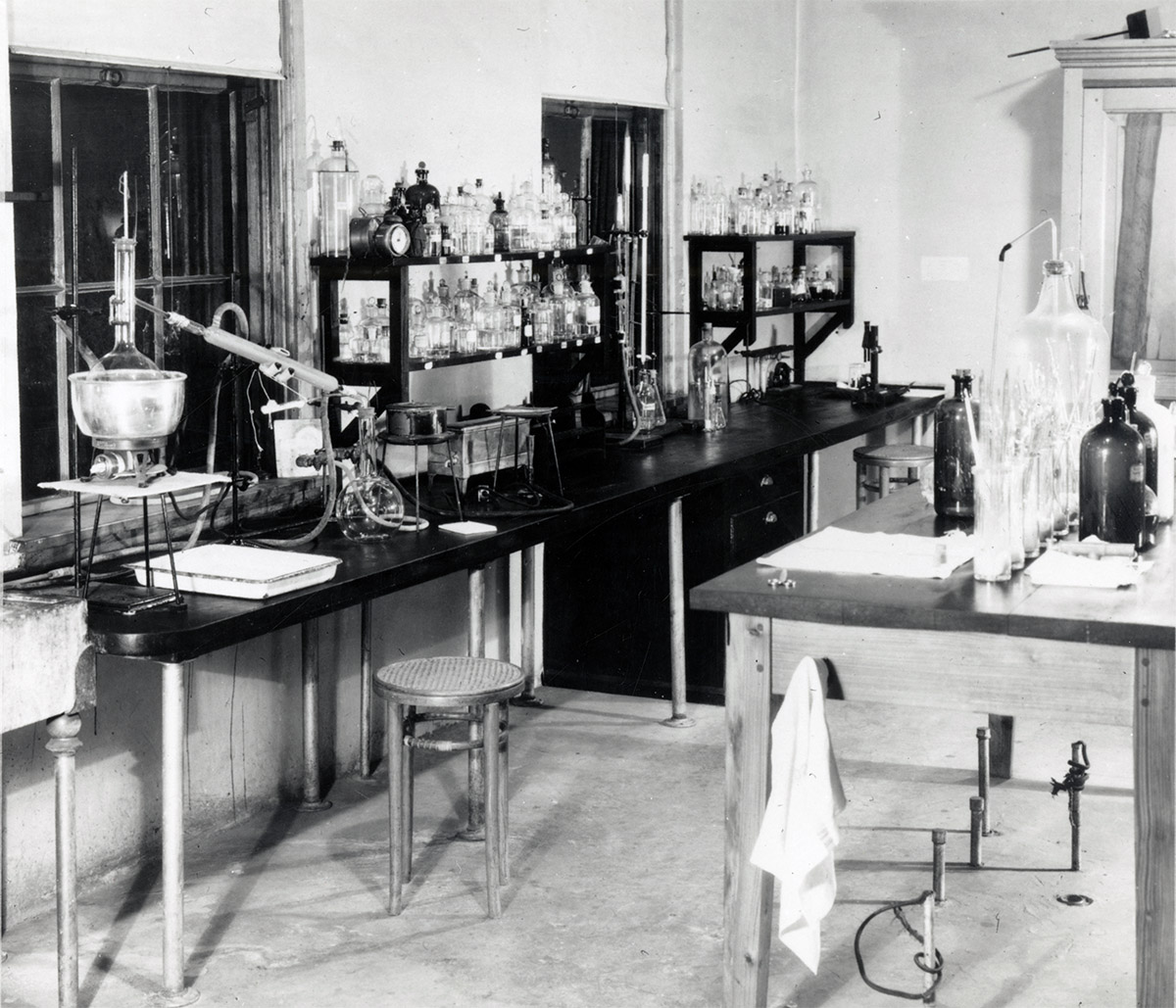 Laboratory in St. Elizabeths Hospital, c. 1910
Laboratory in St. Elizabeths Hospital, c. 1910
National Library of MedicineAshby transfused patients of blood type A, B, or AB with type O blood and then treated blood specimens in vitro with anti-A or anti-B serum, which would agglutinate the blood cells of the patient but not those of the blood donor. She determined that counts of unagglutinated cells from the specimens correlated with the number of transfused blood cells present in the recipient’s circulation, and that the transfused cells could persist for 30 days or more. Further research proved that a red blood cell could circulate for up to 110 days.
Following her graduation from the University of Minnesota in 1921, Ashby became a researcher in the division of experimental bacteriology at the Mayo Foundation; in 1923 she became a member of the Mayo Clinic staff.
In 1924 Ashby accepted a position as an immunologist at St. Elizabeths Hospital in Washington, D.C., where she supervised the serology and bacteriology laboratories. While at St. Elizabeths, Ashby’s research initially focused on immunology, pathology, and hematology. Later in her career, she also studied brain and central nervous system enzyme chemistry, notably carbonic anhydrase and patterns of enzyme distribution in brain functions.
She officially retired in 1949, though she remained at St. Elizabeths as a guest researcher until 1958.
Eleanor Bliss, Sc.D. (1899–1987)
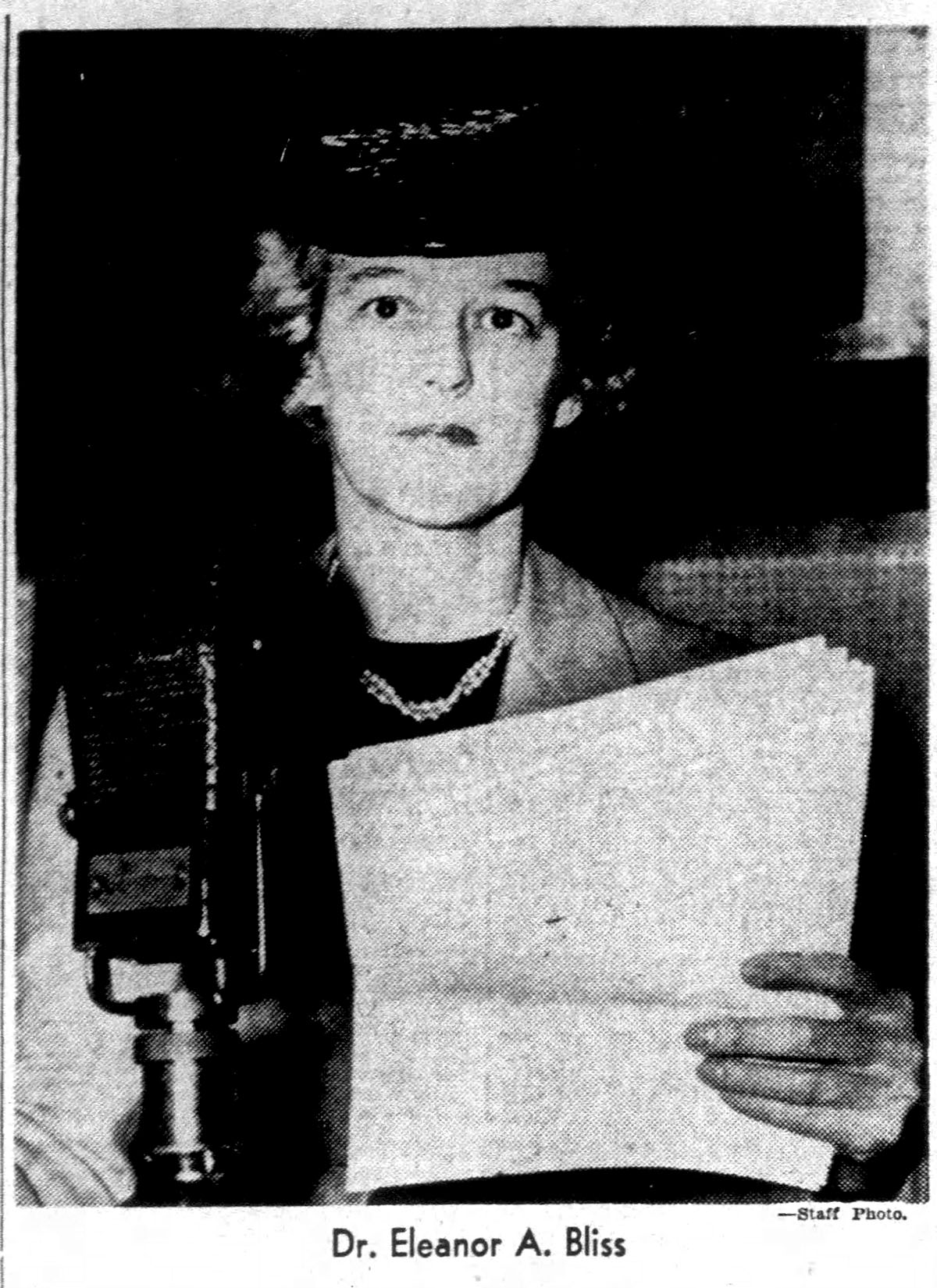 Eleanor Albert Bliss, 1942
Eleanor Albert Bliss, 1942
Richmond Times Dispatch/Newspapers.comThe research that Eleanor Albert Bliss (AAI 1931) performed with sulfanilamide drugs saved the lives of countless soldiers in World War II, as well as that of the U.S. president’s son. Her work with fellow Johns Hopkins University professor Perrin H. Long uncovered numerous uses for the sulfa compounds and launched antibacterials into the public consciousness.
Bliss grew up in Baltimore and attended Bryn Mawr College, receiving her A.B. in 1921, and then continued to Johns Hopkins where she earned her Sc.D. in 1925. She immediately joined the Hopkins faculty as a fellow in medicine. Early in her career, she worked on influenza and whooping cough but soon turned her attention to fighting streptococcal infections. In 1934 she and Long isolated minute beta hemolytic streptococci that would be classified as the Lancefield group F.
Bliss’s scientific epiphany came when she traveled to London in July 1936 to attend the Second International Congress of Microbiology. There, she learned of Leonard Colebrook’s (AAI 1915) first clinical study to treat haemolytic streptococcus using the recently created sulfa drug Prontosil. Colebrook’s research proved that Prontosil was the first synthetic drug to effectively treat a range of bacterial infections in humans and rendered a particularly strong response to streptococcal infections. Bliss and Long immediately requested samples of Prontosil for their own research, and by that September had successfully treated a seven-year-old girl for erysipelas (a streptococcal infection of the skin and superficial lymphatics) with p-aminobenzenesulfonamide (PABS, or sulfanilamide), one of the intermediate molecules of Prontosil.
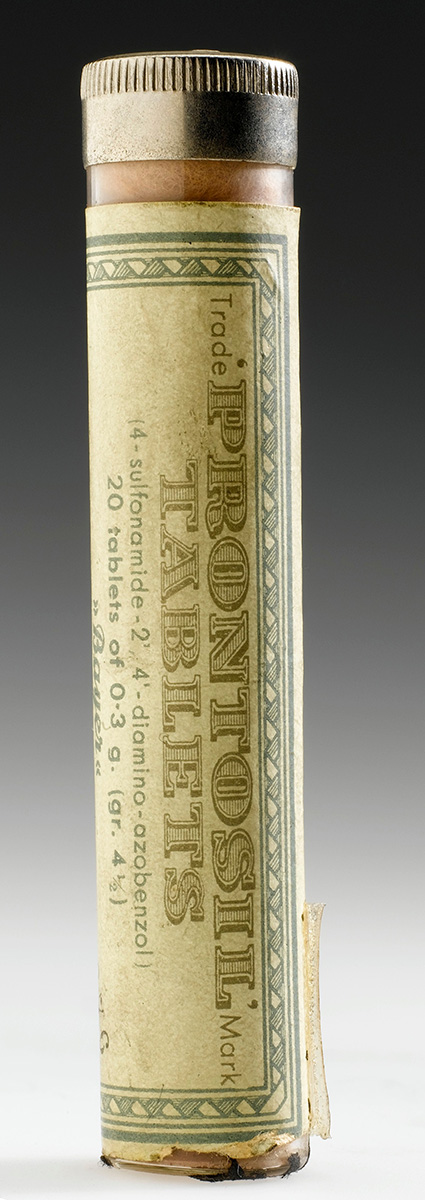 Prontosil, c. 1935–1950
Prontosil, c. 1935–1950
Science Museum, LondonThat November, Bliss and Long presented their preliminary findings at the meeting of the Southern Medical Association in Baltimore. In December, the team achieved its first successful treatment of streptococcal meningitis, which previously had a nearly 100% mortality rate. Days later, front-page news broke that the president’s son, Franklin Delano Roosevelt Jr., had also been cured of a lethal streptococcal infection using a treatment based on Bliss and Long’s findings. Within months, several clinical trials demonstrated the drug’s efficacy against a broad range of infections.
The next year, Bliss defended the proper use of sulfanilamide after the S. E. Massengill Company produced an “Elixir of Sulfanilamide” that contained toxic diethylene glycol, resulting in more than 100 deaths in 15 states. The direct result of the tragedy was the 1938 Federal Food, Drug, and Cosmetic Act, which established more stringent safety standards for drug production and sales.
The Second World War proved the importance of Bliss’s work. Sulfa drugs were used extensively on the battlefields and in military hospitals to treat and prevent infection and were included as part of the standard issue first-aid kit. Toward the end of the war, Bliss served as an advisor to the U.S. Army Chemical Corps (then called the U.S. Chemical Warfare Service) on defenses against biological weapons.
Bliss remained on the faculty at Johns Hopkins until 1952, when she returned to her alma mater Bryn Mawr as professor of biology and the graduate dean. She remained there until her retirement in 1966.
Jessie Marmorston, M.D. (1900–1980)
From an early age, Jessie Marmorston (AAI 1932) spoke her mind and excelled at practically everything she set out to do. Born in Kyiv (then part of the Russian Empire), she arrived in the United States with her family in 1906 and settled in Buffalo, New York. Her mother’s death the next year inspired her to become a doctor. She had her first job in medicine at a dentist’s office when she was only 10 years old. As a teenager, Marmorston was active in theater and debate clubs—and known as “an enthusiastic and wordy suffragette.”
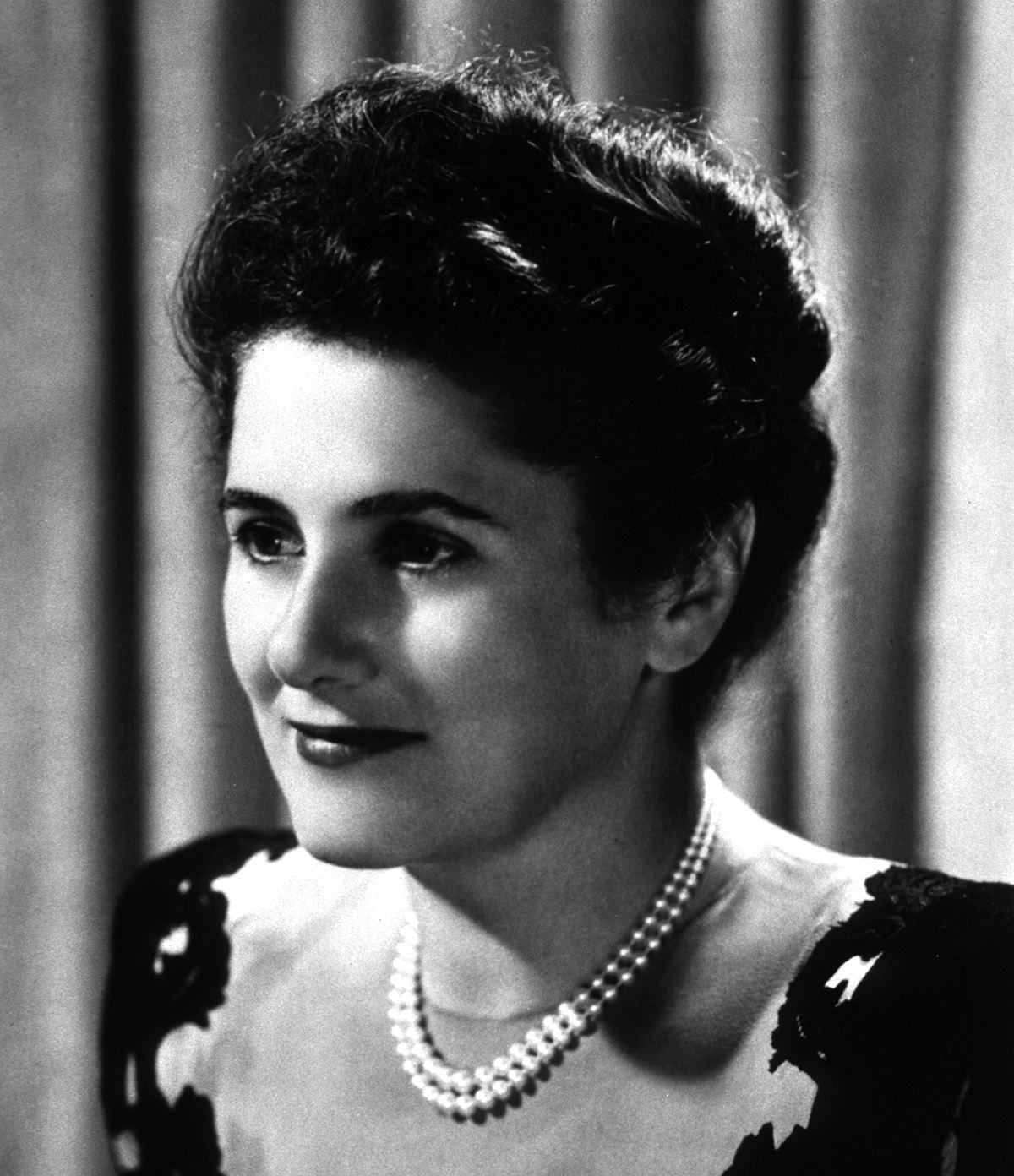 Jessie Marmorston, 1951
Jessie Marmorston, 1951
National Library of MedicineThe powers of persuasion she developed in her youth proved useful when she convinced the Buffalo Federation of Mothers to set aside funds for her university and medical school tuition. She graduated from the University of Buffalo with a pre-med degree and earned her M.D. (1924) from the University of Buffalo School of Medicine, followed by an internship at Montefiore Hospital in the Bronx, New York City.
There she met David Perla, also an intern, and their shared love of immunology turned into a scientific partnership. Marmorston moved to Cornell University Medical College and was briefly married to Julius Gottesman, another physician, but her professional relationship with Perla continued, eventually developing into her second marriage. The couple published two well-received books on their research before Perla died prematurely of a sudden heart attack in 1940.
Through Perla’s social network, Marmorston had made some connections within the Hollywood film industry, and in 1943 she moved west to take a position as assistant professor of medicine at the University of Southern California (USC). Two years later, she married film producer Lawrence Weingarten, who would eventually produce Cat on a Hot Tin Roof. She also became the personal physician and confidante of Louis B. Mayer, the co-founder of Metro-Goldwyn-Mayer studios.
Marmorston used these Hollywood connections to generate funding for scholarships at USC; in 1959 she arranged a benefit screening of Ben-Hur that resulted in more than $100,000 in donations in a single night. The next year, she was elected a Fellow of the American College of Physicians and named one of 10 Women of the Year by the Los Angeles Times.
Socializing with filmmakers did not slow the pace of Marmorston’s research in Los Angeles. Supported by several grants from the United States Public Health Service and the National Institutes of Health, she continued to publish extensively on hormonal mechanisms and their possible applications for treating cancer, heart disease, and other conditions—including those related to the aging process. Her research also explored links between mental health and the immune system.
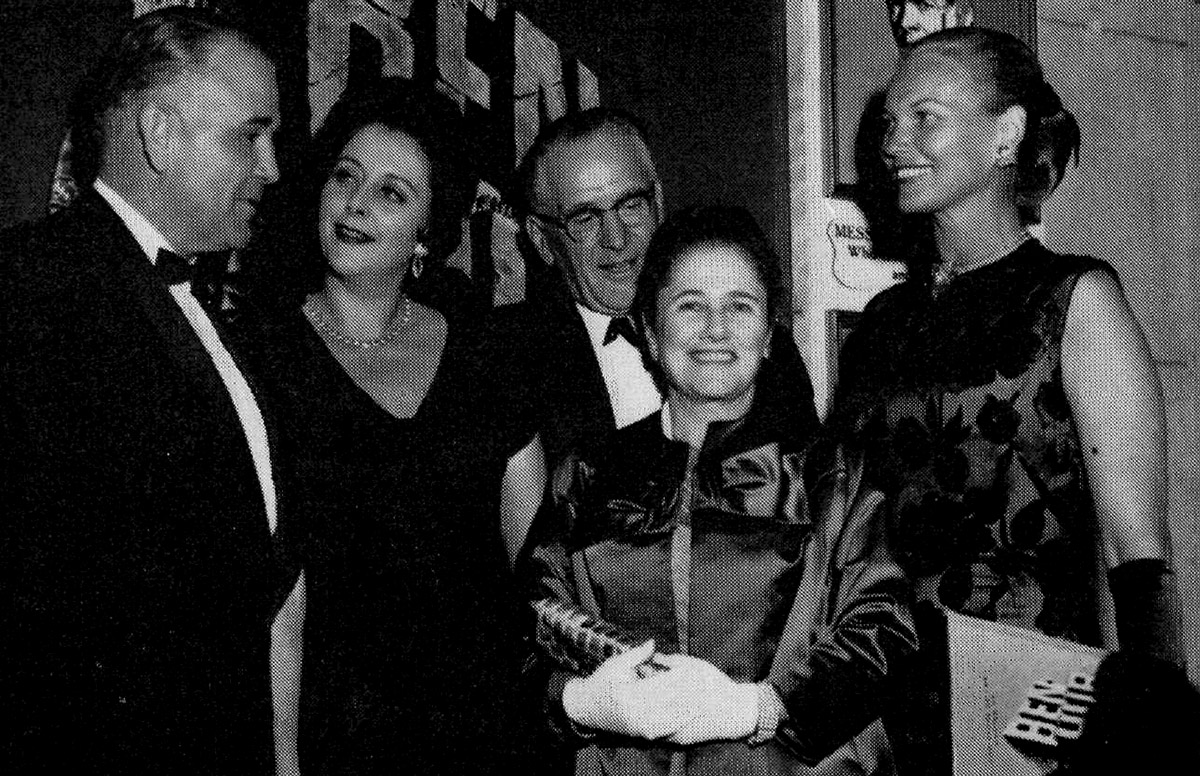 Marmorston (second from right) at Ben-Hur Premiere Benefit, 1959
Marmorston (second from right) at Ben-Hur Premiere Benefit, 1959
University of Southern CaliforniaMarmorston stayed at USC for the rest of her professional life, becoming professor of experimental medicine in 1953 and clinical professor of medicine in 1957. In addition to her research, she served as the supervising director of the California Foundation for Medical Research and as an attending physician at Cedars-Sinai Hospital and Los Angeles County Hospital. She was a consistent advocate for greater opportunities for women in the medical and research professions.
References
- Amoss, Harold L. and Martha Wollstein. “A Method for the Rapid Preparation of Antimeningitis Serum.” Journal of Experimental Medicine 23, no. 3: 403–17.
- Bailey, Martha J., ed. “Bliss, Eleanor Albert.” American Women in Science. Denver: ABC-CLIO, 1994.
- Ballentine, Carol. “Taste of Raspberries, Taste of Death: The 1937 Elixir Sulfanilamide Incident.” FDA Consumer. June 1981.
- Barry, John M. The Great Influenza: The Epic Story of the Deadliest Plague in History. Penguin Books: New York, 2005.
- Callan, Mary Ann. “Women Excel in Doctor’s Role.” Los Angeles Times. 25 April 1961.
- Eyman, Scott. Lion of Hollywood: The Life and Legend of Louis B. Mayer. New York: Simon & Schuster, 2005..
- Fabbri, Christianne Nockels. From Anesthesia to X-Rays: Innovations and Discoveries that Changed Medicine Forever. Santa Barbara: Greenwood, 2017).
- Fairbanks, Virgil F. “In Memoriam: Winifred M. Ashby 1879–1975.” Blood 46, no. 6: 997.
- Jackson, H. Claire. “Martha Wollstein.” American National Biography Online, www.anb.org (accessed February 7, 2011).
- Lesch, John E. The First Miracle Drugs: How the Sulfa Drugs Transformed Medicine. New York: Oxford University Press, 2006.
- Monaghan, W. Patrick. “Winifred Mayer Ashby (1879–1975): Medical Laboratory Scientist Extraordinaire.” Lab Medicine 45, no. 1: e9–e10.
- Morens, David M. and Jeffery K. Taubenberger. “A Forgotten Epidemic that Changed Medicine: Measles in the US Army, 1917–18.” Lancet Infectious Diseases 15, no. 7: 858.
- Ogilvie, Marilyn Bailey and Joy Dorothy Harvey, eds. “Winifred Mayer Ashby (1879–1975 [sic]).” The Biographical Dictionary of Women in Science: Volume 1 (Routledge: NYC, 2000), 55.
- Ogilvie, Marilyn Bailey and Joy Dorothy Harvey, eds. “Martha Wollstein (1868–1939).” The Biographical Dictionary of Women in Science: L-Z. New York City: Routledge, 2000.
- Rutty, Christopher J. “Povitsky Bottle (1950s).” Health Arts and Humanities Program—University of Toronto, http://health-humanities.com/twk-povitsky-bottle-1950s (accessed February 15, 2020).
- Tebbe-Grossman, Jennifer. “Martha Wollstein,” Jewish Women: A Comprehensive Historical Encyclopedia, Jewish Women’s Archive. https://jwa.org/encyclopedia/article/wollstein-martha (accessed January 9, 2020).
- Wright, James R., Jr. and Jeanne Abrams. “Martha Wollstein of Babies Hospital in New York City (1868–1939)—The First North American Pediatric Pathologist.” Pediatric and Developmental Pathology 21, no.5: 437–43.
- “Boy Cured By New Serum Of Influenza Meningitis.” Baltimore Sun. 30 March 1923.
- “Dr. David Perla, Pathologist, Dies.” New York Times. 15 June 1940.
- “Dr. Martha Wollstein: Retired Physician and Graduate of Women’s Medical College.” New York Times. 1 October 1939.
- “Dr. Winifred M. Ashby, Bacteriologist, Dies.” Washington Post. 26 July 1975.
- “Old World Girls to be M.D.’s.” Philadelphia Press. 14 May 1901.
- “Prontosil.” TIME. 28 December 1936.
- “Red Cross to Get Debate Receipts.” Buffalo Courier. 28 April 1918.
- “Researcher Honored.” Edwardsville [Illinois] Intelligencer. 8 April 1960
- “Woman Doctor Seeks Medical Student Funds.” Los Angeles Times. 23 November 1959.
- “Woman of the Year: Dr. Marmorston in Battle to Find Heart Attack Cause.” Los Angeles Times. 18 January 1961.
- “Women of Year Add to Southland Enrichment.” Los Angeles Times. 18 December 1960.
- Women’s Overseas Hospitals U.S.A. of the National American Woman Suffrage Association. New York: National Woman Suffrage Publishing Co., Inc., 1919. [http://libcdm1.uncg.edu/cdm/ref/collection/WWIPamp/id/1738]
- “Young Roosevelt Saved by New Drug.” New York Times. 17 December 1936.
- Olga Povitzky to Dr. Martha Tracy. February 28, 1938. Records of Women’s Medical College of Pennsylvania: Registrar 1921–1975, Drexel University College of Medicine Archives & Special Collections.
Artiles authored by Martha Wollstein
- Wollstein, Martha. “The Dysentery Bacillus in a Series of Cases of Infantile Diarrhea.” Journal of Medical Research 10, no. 1: 11–20.
- Wollstein, Martha. “An Experimental Study of Parotitis.” Journal of the American Medical Association 71, no. 8: 639–44.
- Wollstein, Martha. “The History of Women in Medicine.” The Woman’s Medical Journal 18, no. 4: 69.
- Wollstein, Martha. “The Influenza Bacillus in Inflammations of the Respiratory Tract in Infants.” Journal of Experimental Medicine 8, no. 6: 681–91.
- Wollstein, Martha. “Pfeiffer’s Bacillus and Influenza: A Serological Study.” Journal of Experimental Medicine 30: 555–68
Artiles authored by Olga R.Povitzky
- Povitzky, Olga R. “Prompt Macroscopic Agglutination in the Diagnosis of Glanders.” The Journal of Immunology 3, no. 6: 463–79.
- Povitzky, Olga R. “Diphtheria Toxin.” The Journal of Immunology 16, no. 5: 421–8.
- Povitzky, Olga R., et. al. “IV. Further Studies on Grouping of Influenza Bacilli with Special Reference to Permanence of Type in the Carrier.” The Journal of Immunology 6, no. 1: 65–80
- Povitzky, Olga R., Erla Jackson, and Minnie Eisner. “Diphtheria Toxoid. Preparation and Dosage.” The Journal of Immunology 20, no. 3: 247–53.
- Povitzky, Olga R. and Minnie Eisner. “Merthiolate Versus Phenol As a Preservative for Diphtheria Toxoids—Diluted and Undiluted at Icebox and Room Temperatures.” The Journal of Immunology 28, no. 3: 209–13
- Povitzky, Olga R. and Minnie Eisner. “The Effect of Temperature on the Antigenic Value of Diphtheria Toxoid.” The Journal of Immunology 28, no. 3: 251–33.
Artiles authored by Winifred M. Ashby
- Ashby, Winifred M. “Destruction of Transfused Blood in Normal Subjects and in Pernicious Anemia Patients.” Ph.D. diss, University of Minnesota, 1921.
- Ashby, Winifred. “The Determination of the Length of Life of Transfused Blood Corpuscles in Man.” Journal of Experimental Medicine 29, no. 3: 267–81.
- Ashby, Winifred. “The Span of Life of the Red Blood Cell. A résumé.” Blood 4, no. 5: 486–500
Artiles authored by Eleanor A. Bliss
- Long, Perrin H. and Eleanor A. Bliss. “Studies Upon Minute Hemolytic Streptococci: I. The Isolation and Cultural Characteristics of Minute Beta Hemolytic Streptococci.” Journal of Experimental Medicine 60, no. 5: 619–31.
Publications by Jessie Marmorston
- Perla, David and Jessie Marmorston. The Spleen and Resistance. Baltimore: Williams & Wilkins, 1935.
- Perla, David and Jessie Marmorston. Natural Resistance and Clinical Medicine. Boston: Little, Brown and Company, 1941.